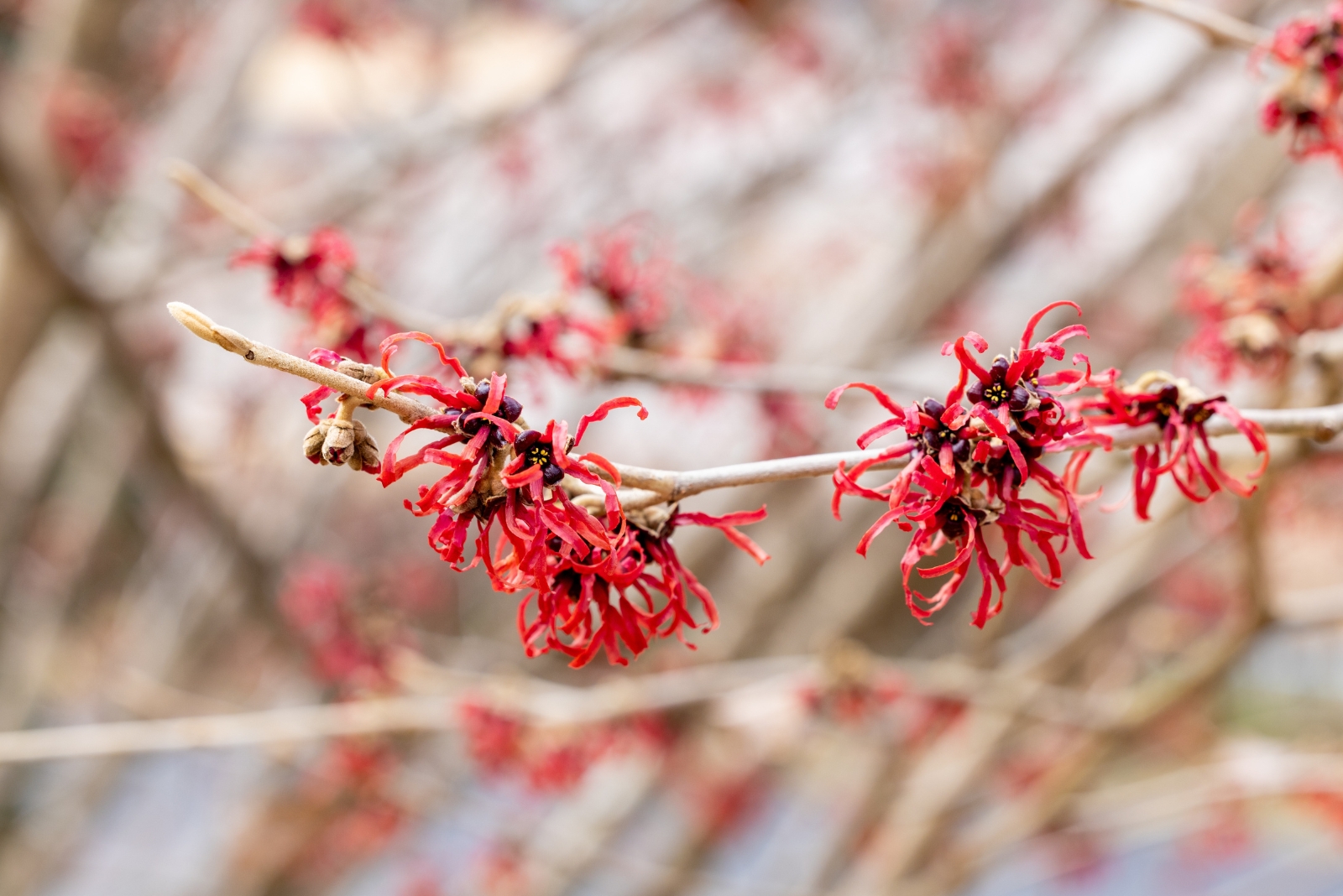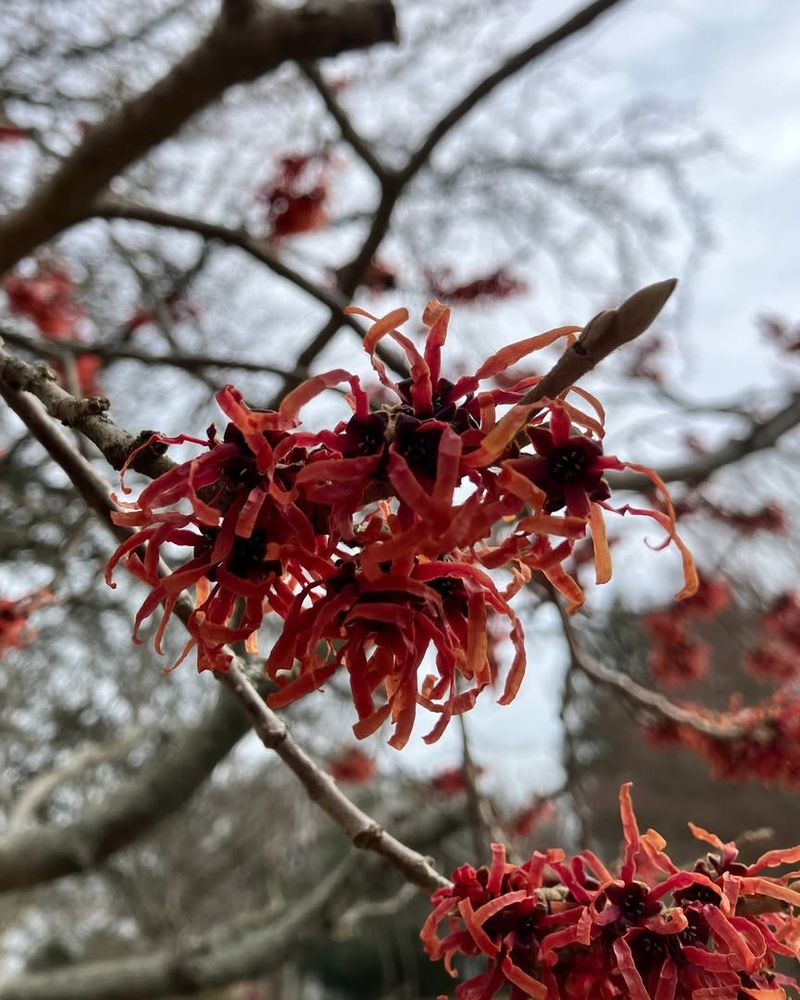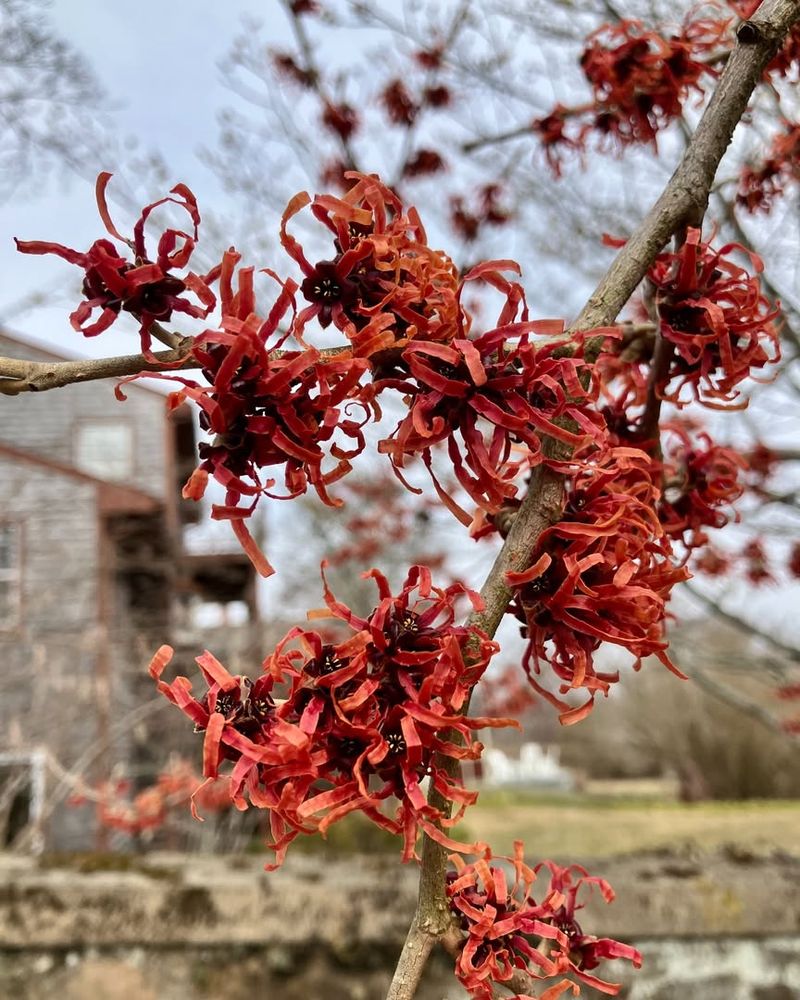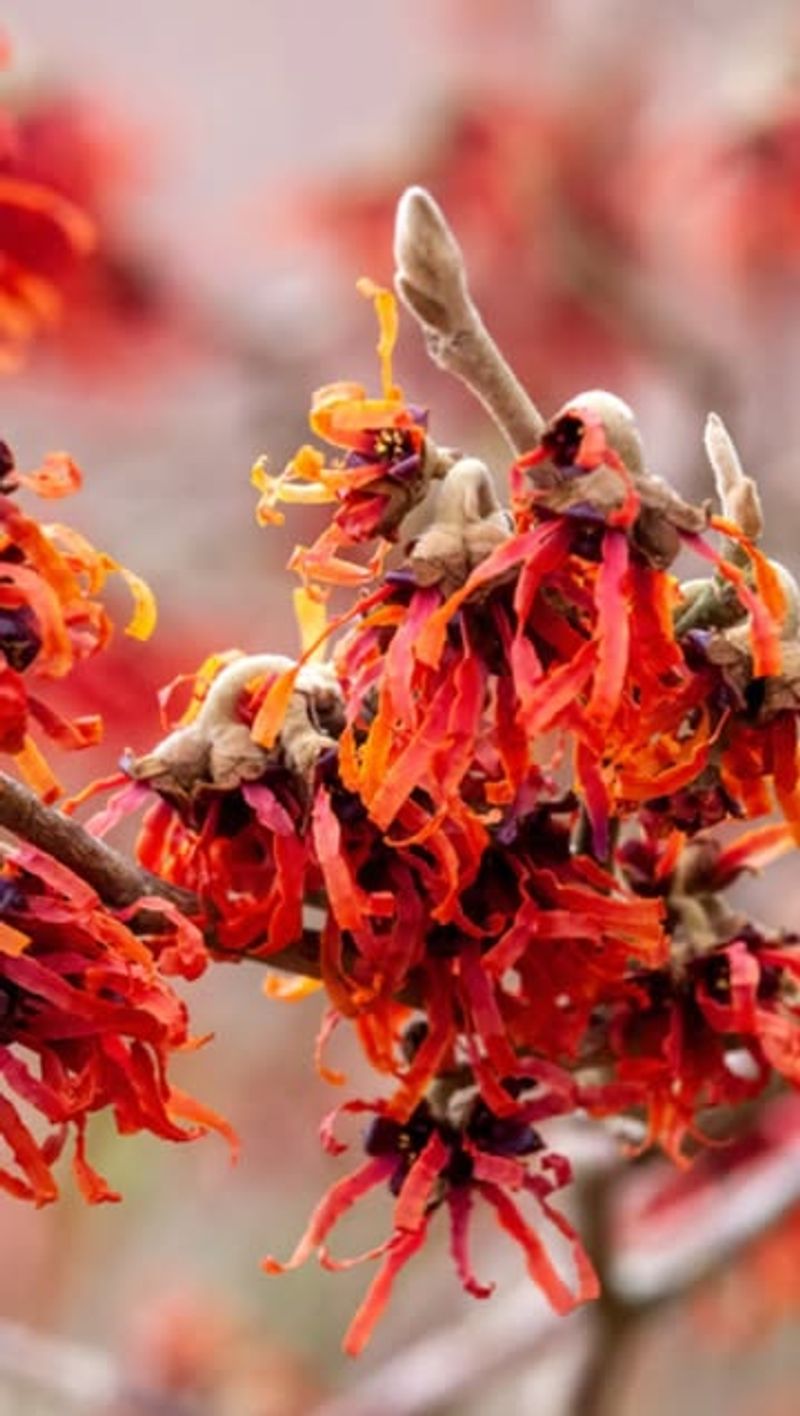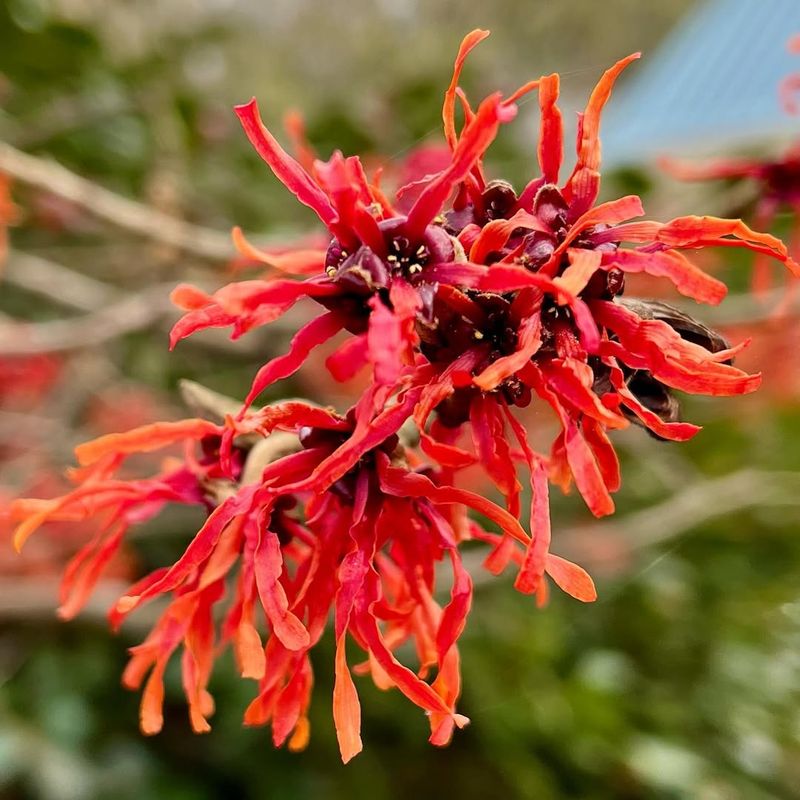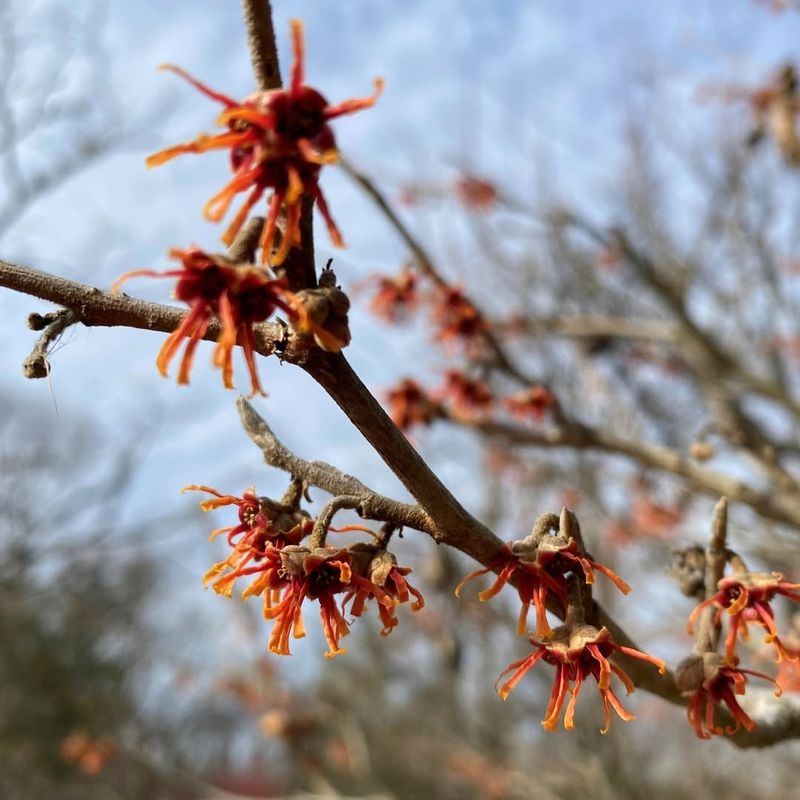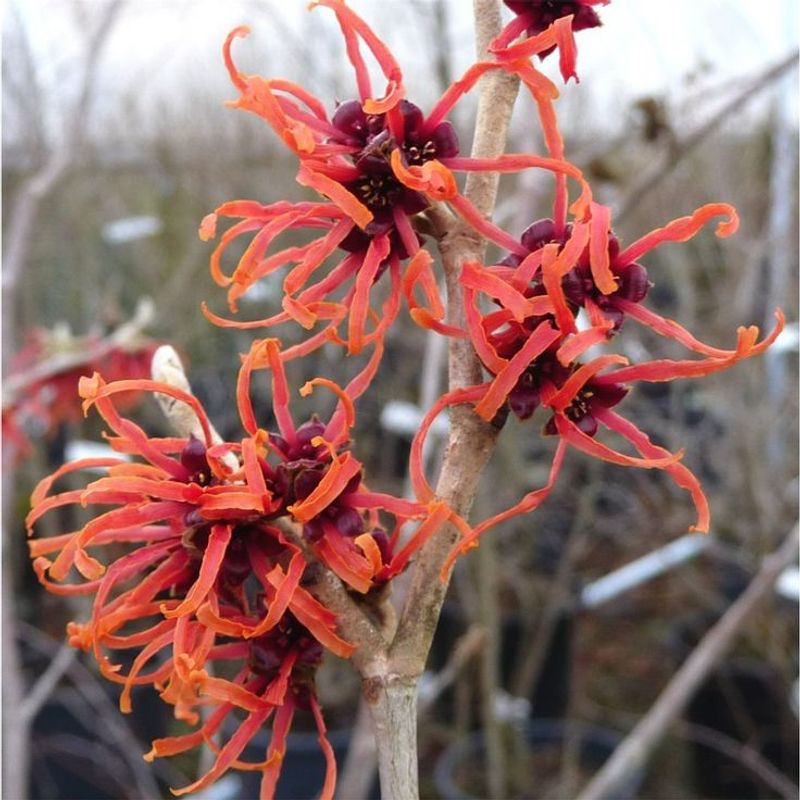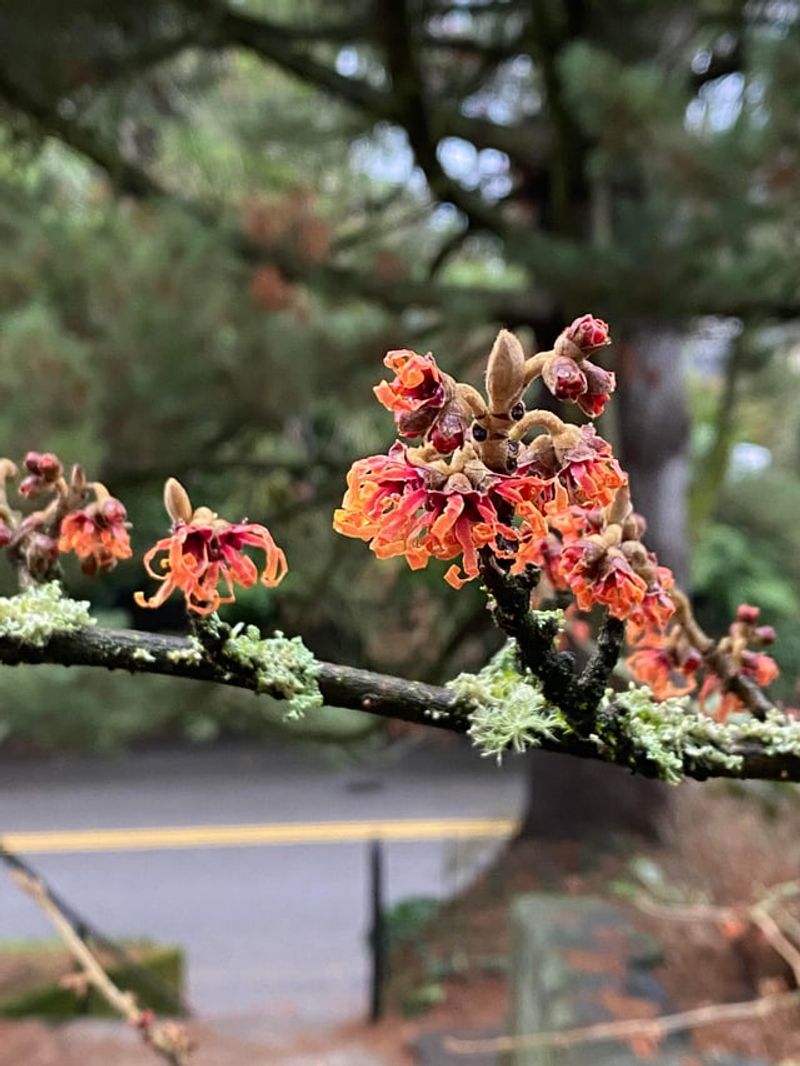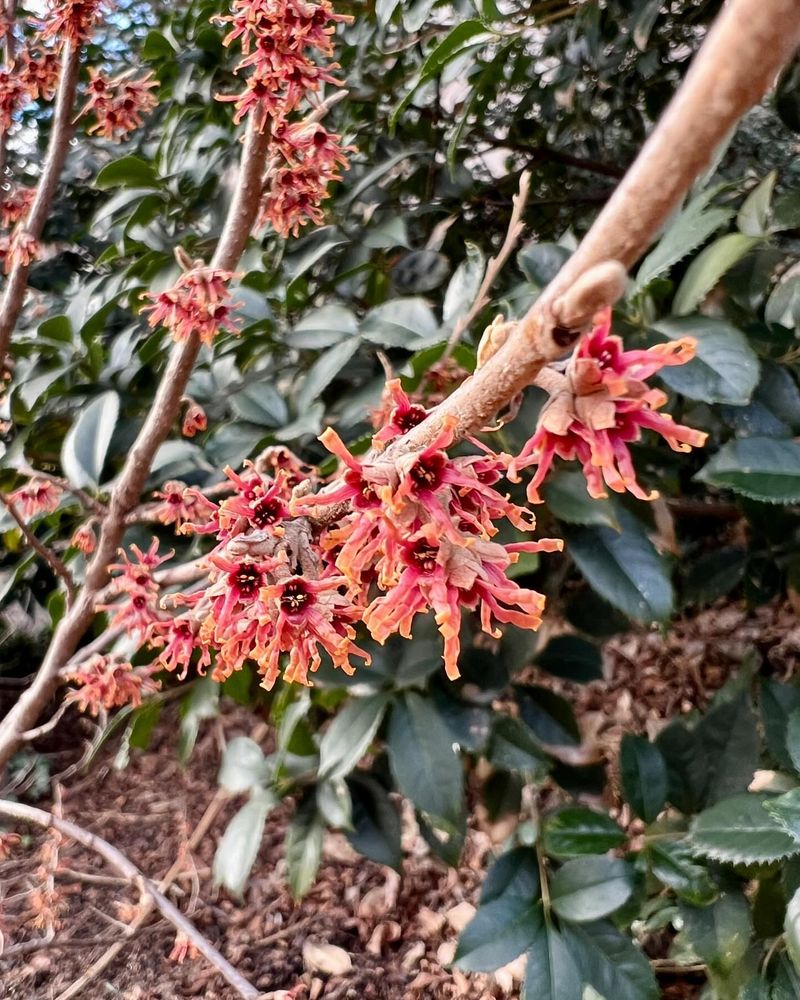If you’re looking for a shrub that truly turns heads in a Connecticut garden, meet Diane Witch Hazel. Its fiery red blooms pop against the fall landscape, making every passerby stop and stare.
This hardy shrub isn’t just beautiful—it brings a touch of drama and charm that few plants can match. Once you see those glowing flowers, it’s hard not to fall a little in love.
1. Blooms When Nothing Else Does
Most plants take a long nap during Connecticut’s freezing winter months, leaving gardens looking bare and boring. Diane witch hazel laughs at the cold and decides January through March is the perfect time to bloom.
While your neighbors stare at brown lawns and leafless trees, your yard becomes the neighborhood showstopper. Those ribbon-like red petals unfurl even when snow surrounds them, creating an almost magical contrast.
Connecticut gardeners treasure this quirky timing because it brings hope and beauty during the coldest, darkest season.
2. Red Color Pops Against Snow
Picture this: fresh white snow blanketing your Connecticut yard, and suddenly these brilliant red blooms appear like nature’s fireworks. The color contrast is absolutely breathtaking and impossible to ignore.
Photographers and nature lovers flock to gardens featuring Diane witch hazel because the visual impact is stunning. Red petals against pure white create a scene straight out of a holiday card.
Your garden becomes an instant conversation starter when neighbors walk by and spot this incredible display during Connecticut’s snowy season.
3. Survives Connecticut’s Harsh Winters
Connecticut winters can be brutal, with temperatures dropping well below freezing for weeks at a time. Many delicate plants simply can’t handle the stress and end up damaged or dead by spring.
Diane witch hazel is built differently—it actually thrives in USDA zones 4-8, making Connecticut’s climate absolutely perfect. The plant’s flowers are remarkably frost-resistant, continuing to bloom even after ice storms.
Gardeners across Connecticut appreciate not having to baby this shrub through winter like they would with more fragile ornamentals.
4. Low Maintenance for Busy Gardeners
Not everyone has hours to spend pruning, fertilizing, and fussing over their garden plants. Diane witch hazel understands your busy Connecticut lifestyle and basically takes care of itself once established.
You won’t need special fertilizers, constant watering schedules, or complicated pruning techniques to keep it happy. It naturally grows into an attractive shape without much intervention from you.
Connecticut homeowners with packed schedules love having a showstopping plant that doesn’t demand constant attention or weekend maintenance sessions.
5. Attracts Winter Pollinators
Did you know some brave insects stay active during Connecticut’s milder winter days? When temperatures climb above freezing, hungry bees and other pollinators desperately search for food sources.
Diane witch hazel becomes a lifesaving cafeteria for these early risers, offering nectar and pollen when absolutely nothing else is blooming. Watching pollinators buzz around red blooms in February feels like witnessing a small miracle.
Connecticut gardeners who care about supporting local wildlife appreciate how this shrub helps struggling pollinator populations survive the lean winter months.
6. Adds Year-Round Interest
Sure, those red winter blooms steal the spotlight, but Diane witch hazel keeps delivering beauty all year long in Connecticut gardens. Spring and summer bring attractive green foliage that provides a lovely backdrop for other plants.
Come autumn, the leaves transform into gorgeous shades of yellow and orange before dropping. Then winter arrives with those famous red flowers, completing the cycle.
Connecticut homeowners get four distinct looks from one plant, making it an incredibly smart investment for year-round curb appeal and garden interest.
7. Perfect Size for Small Yards
Many Connecticut homes have modest-sized yards where giant trees or sprawling shrubs just won’t work. Diane witch hazel typically grows 10-12 feet tall and wide, making it manageable for tighter spaces.
You get major visual impact without the plant swallowing your entire yard or blocking windows and walkways. It works beautifully as a focal point, foundation planting, or even in large containers.
Connecticut gardeners with limited square footage can finally enjoy a spectacular flowering shrub without worrying about it taking over their entire outdoor space.
8. Native-Friendly and Adaptable
While Diane is a cultivated variety, witch hazels are native to eastern North America, meaning they fit naturally into Connecticut’s ecosystem. They adapt beautifully to local soil conditions, rainfall patterns, and temperature swings.
Unlike fussy exotic plants that struggle in Connecticut’s climate, witch hazel feels right at home. It plays nicely with other native plants and doesn’t require special amendments or treatments.
Connecticut gardeners creating eco-friendly, sustainable landscapes love how seamlessly Diane witch hazel integrates while still providing that wow factor with its stunning red blooms.

